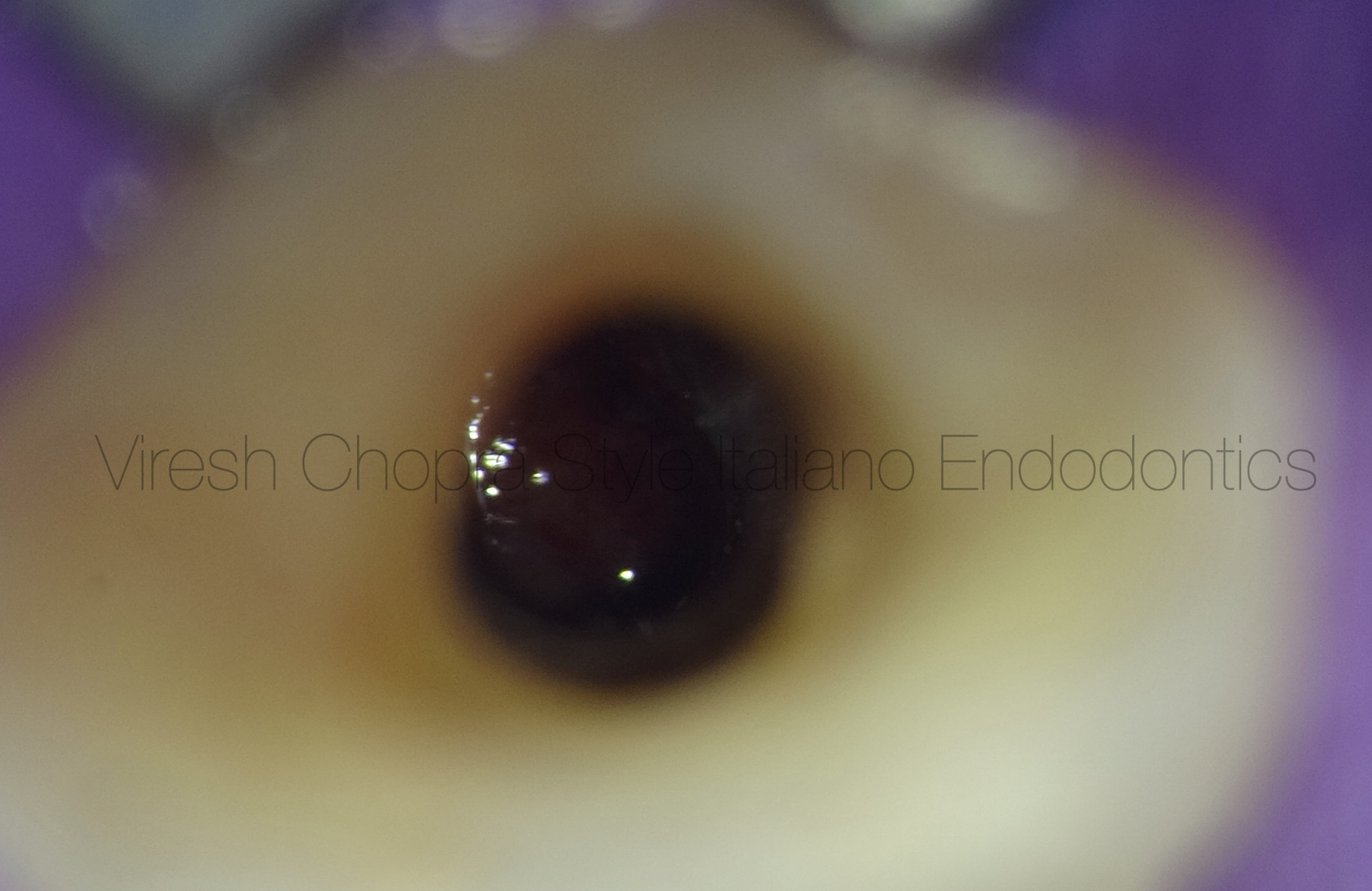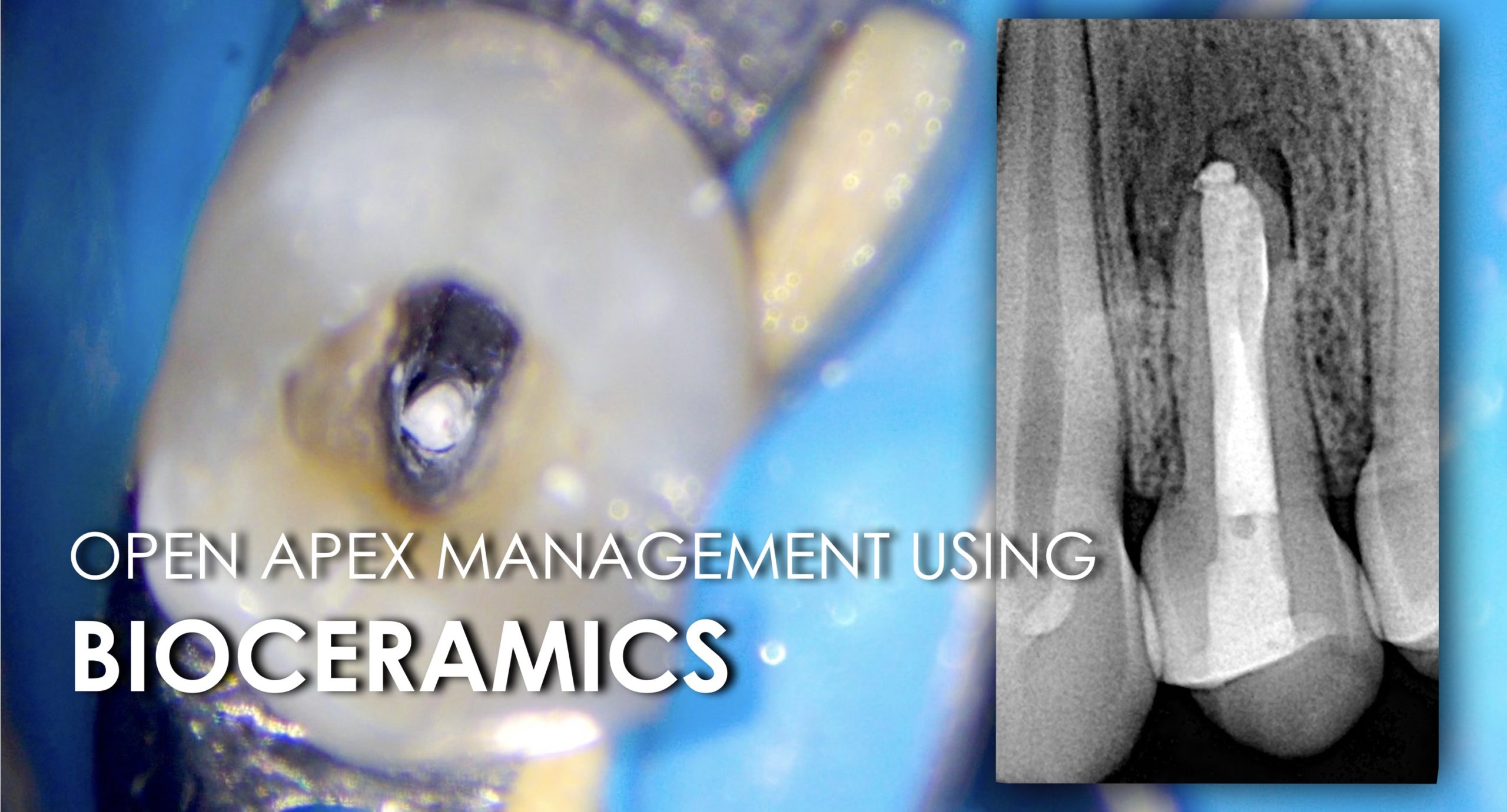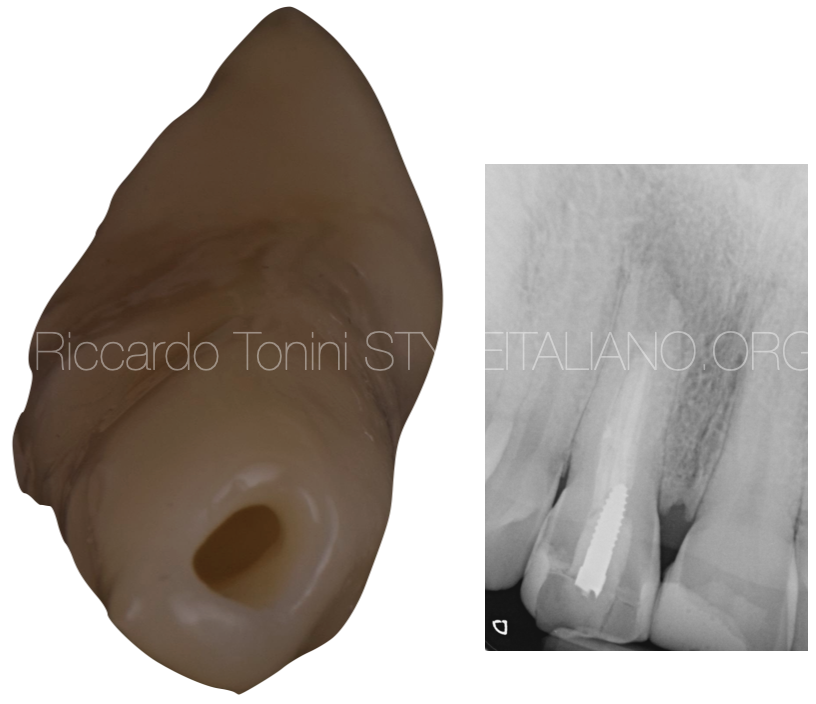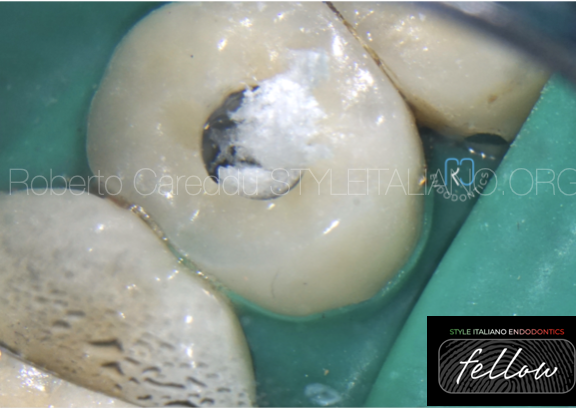
Making apical plugs easier using a simple collagen sponge
26/08/2023
Fellow
Warning: Undefined variable $post in /var/www/vhosts/styleitaliano-endodontics.org/endodontics.styleitaliano.org/wp-content/plugins/oxygen/component-framework/components/classes/code-block.class.php(133) : eval()'d code on line 2
Warning: Attempt to read property "ID" on null in /var/www/vhosts/styleitaliano-endodontics.org/endodontics.styleitaliano.org/wp-content/plugins/oxygen/component-framework/components/classes/code-block.class.php(133) : eval()'d code on line 2
Proper seal of the root canal system is a key factor for long term success of the endodontic treatment. In the majority of cases, the root anatomy and the apical constriction offer a reliable way to control the correct apical obturation, allowing the compaction of the obturation material and tridimensional seal.
However, incomplete root formation, eccessive canal enlargement and aggressive apical reabsorption cause the loss of apical constriction and the presence of wide apical gauging. This lead to management difficulties due to the risk of material extrusion and incorrect apical seal.
While for incomplete root formation revitalization is a viable option, when a fully formed root presents an apex wider than 60, the apical plug is recommended.
Due to its characteristics of biocompatibility, excellent seal and setting in presence of moist, MTA has been considered the material of choice for these procedures. Despite all its positive features, MTA presents some drawbacks such as long setting time and difficult handling.
In recent years a pletora of new products, the hydraulic calcium silicate cements (HCSCs), have been introduced on the market to try overcoming some of the issues of MTA, while maintaining similar characteristics. In particular, putty formulations are becoming more and more popular due to their easy handling.
When performing an apical plug, the material should be compacted at least in the last 3 millimetres of the apex. In case of wide apical sizes, it may be difficult to control the compaction of the material and this can lead to extrusions or voids.
Placing a collagen/fibrin sponge just outside the apical foramen offers an increased resistance to push out forces, helping to achieve a more controlled and homogeneous obturation.
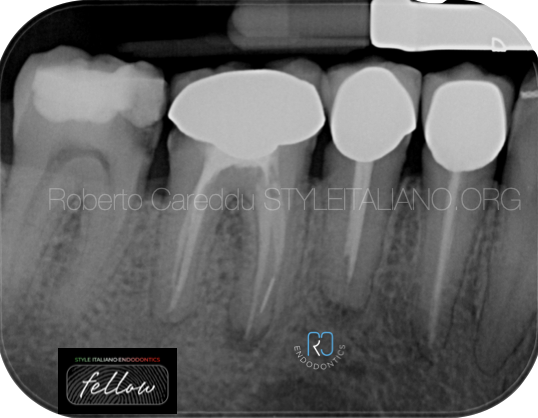
Fig. 1
This patient presents several restorative issues and has an ongoing restorative plan.
Tooth 45 (Lower right 5) was treated with a not ideal root canal treatment. It presents a crown that will be soon substituted.
A radiolucent area at the apex indicates the presence of periapical pathology that caused the resorption of the apical portion of the root.
The tooth was treated through the crown and, after the removal of the guttapercha present, the canal was shaped and irrigated using NaOCL 5.25% and EDTA sonically activated.

Fig. 2
Because of the wide apical gauging (80), an apical plug was performed.
After fitting the mastercone to working length, 3 millimetres of it were cut in order to leave space for the hydraulic cement.
The shortened mastercone was used as well as a “customised plugger” that allowed more control on the apical compaction of the material.
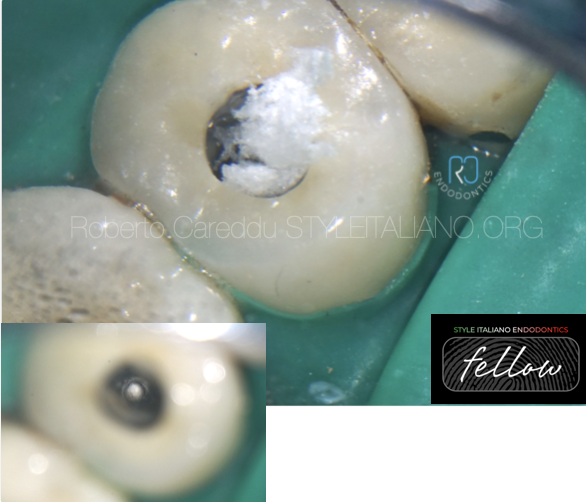
Fig. 3
In order to avoid extrusions and allow better compaction of the HCSC, a collagen sponge was inserted in the canal and then carefully packed outside the apex using a plugger.
The fibrine sponge offered a better resistance against the push out forces.
The HCSC in putty formulation (calcium aluminosilicate) was brought into the canal using a carrier (MAP system).
Initially it was compacted with a thin plugger and then directly with the customised mastercone.
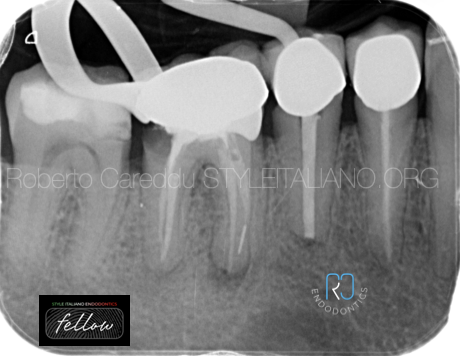
Fig. 4
The mastercone was then covered with a HCSC sealer of the same formulation as the putty used and a cone-check x-ray was taken to ensure that the canal was properly filled before permanent seal.
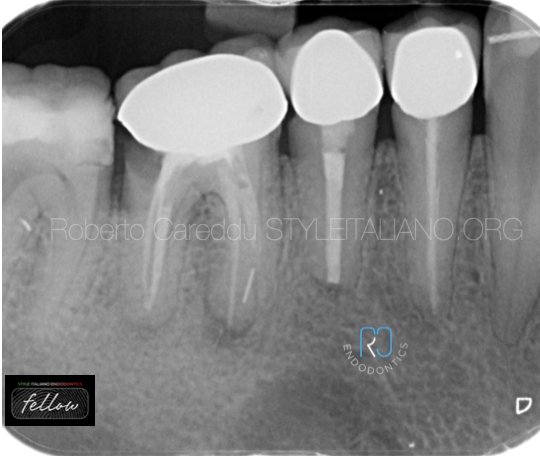
Fig. 5
The tooth is sealed and temporised with a glass ionomer temporary filling while waiting for permanent restoration and new crown.
The apical plug material looks well compacted and there is no extrusion even though the apical gauging was quite wide.

Fig. 6
About the author, Roberto Careddu
He was born in Sardinia (Italy) and he graduated with Honors from the University of Cagliari (Italy). His endodontic journey started with the Master in Clinical Endodontics from the University of Cagliari, followed by many courses, the Diploma in Microendodontics from the University Valencia (Spain) and now I he is completing a 6 years PhD program in Trinity College of Dublin (Ireland).
He lives in Dublin, where he works as Endodontist in private practice and is Clinical Supervisor in the Dublin Dental University Hospital.
He has authored scientific articles and he serves as an international conference speaker.
He is a Member of the Faculty of Dental Surgery of the Royal College of Surgeons of Ireland, Member of the Committee of the Irish Endodontic Society (IES) and the Irish representing for the European Society of Endodontology (ESE).
Conclusions
Big apical gauging is a common finding in dentistry and apical plugs are routinely carried out in order to address the difficulties of properly seal the canal with standard obturation techniques.
Apical control of extrusions is probably the most challenging aspect of apical plugs, however inserting a collagen sponge in the canal and compacting it right outside the apex represents an easy and reliable way to better compact the calcium silicate based material ensuring an homogeneous filling.
Bibliography
Pace R, Giuliani V, Pini Prato L, Baccetti T, Pagavino G. Apical plug technique using mineral trioxide aggregate: results from a case series. Int Endod J. 2007 Jun;40(6):478-84. doi: 10.1111/j.1365-2591.2007.01240.x.
Mente J, Hage N, Pfefferle T, Koch MJ, Dreyhaupt J, Staehle HJ, Friedman S. Mineral trioxide aggregate apical plugs in teeth with open apical foramina: a retrospective analysis of treatment outcome. J Endod. 2009 Oct;35(10):1354-8. doi: 10.1016/j.joen.2009.05.025.
Mente J, Leo M, Panagidis D, Ohle M, Schneider S, Lorenzo Bermejo J, Pfefferle T. Treatment outcome of mineral trioxide aggregate in open apex teeth. J Endod. 2013 Jan;39(1):20-6. doi: 10.1016/j.joen.2012.10.007.
Tek GB, Keskin G. Use of Mineral Trioxide Aggregate with or without a Collagen Sponge as an Apical Plug in Teeth with Immature Apices. J Clin Pediatr Dent. 2021 Jul 1;45(3):165-170
Graziele Magro M, Carlos Kuga M, Adad Ricci W, Cristina Keine K, Rodrigues Tonetto M, Linares Lima S, Henrique Borges A, Garcia Belizário L, Coêlho Bandeca M. Endodontic Management of Open Apex Teeth Using Lyophilized Collagen Sponge and MTA Cement: Report of Two Cases. Iran Endod J. 2017 Spring;12(2):248-252. doi: 10.22037/iej.2017.48.


